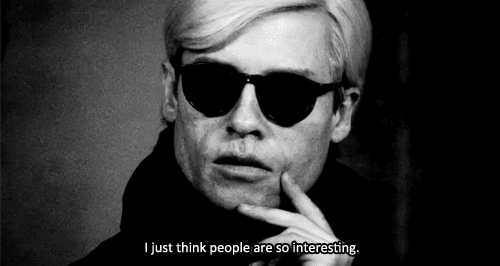With every major retrospective and every important tome, we get both closer and farther away from knowing the full truth about Andy Warhol. The artist himself worked to obscure his own biography and adopted different personae that changed over the years—all of which Blake Gopnik surveys in Warhol, a new biography published Ecco. The 900-plus-page book covers the scope of Warhol’s life, offering incisive looks at the influence of his upbringing and the role that his queerness played in his art. Of the book’s many pages, only about 200 are given over to Warhol’s Pop years; far more are devoted to exploring lesser-known and understudied parts of his oeuvre.
When you were doing research, was it difficult to get people to talk?
Very rarely. There were people who were too old to speak. One problem was that there were people who’d been interviewed a million times, and they just rehashed the same stories. It’s almost impossible to get them to access their memories, rather than the stories they’ve already told. I much preferred interviewing the people who’d never been interviewed before—the minor figures in his life. I got much more out of them, mostly, although Gerard Malanga [a Warhol collaborator and romantic partner] was hugely helpful—I spoke to him for hours and hours.
One person slammed the door in my face: Warhol’s collaborator in film, Paul Morrissey, screamed at me so loudly on the telephone that I actually had to end up putting down the receiver. But other than that I had very few problems.
What do you hope people will learn from the book?
I want them more than anything else to realize that he’s a true, normal artistic genius—or as normal as artistic geniuses get. That means he’s on the order of Picasso or Pollock or van Gogh, all of whom were first foremost artistic geniuses. Their idiosyncrasies—their lunacy, even—are absolutely secondary to their art. The art itself is deeply intelligent at every moment, and it comes from a deeply fascinating and complex and intelligent mind.
Do you have favorite work by Warhol?
There’s no getting around the Campbell’s Soup Cans. It’s a cliché, but it’s amazing how early in his career he comes up with these amazing objects. I spent hours and hours looking at those 32 Campbell’s Soup Cans that he first showed in 1962 in Los Angeles [at Ferus Gallery], and I never come to the end of them. They’re incredibly fertile. Having said this, I do think the films are absolutely stupendous works of art. I have sat with Empire [1964] for all eight hours, watching the Empire State Building, and I didn’t grow tired of it for one minute. It was hugely generative as a work of art. How about if I also tell you about my favorite moment in the book?
Please do.
In Chapter 13, there’s an incredible moment where Andy puts his Pop paintings into a window at Gunther Jaeckel’s department store [Bonwit Teller]. My argument is that they’re not Pop art paintings yet. They’re simply window props. And what happens is, he has a eureka moment shortly after having received them back from the window and realizes, “Wait a minute, those things I made as commercial props to sell young women’s clothing could double as art.” He turns them into a readymade. He holds them up on the pedestal as art—it’s that Duchampian moment that changes everything.





